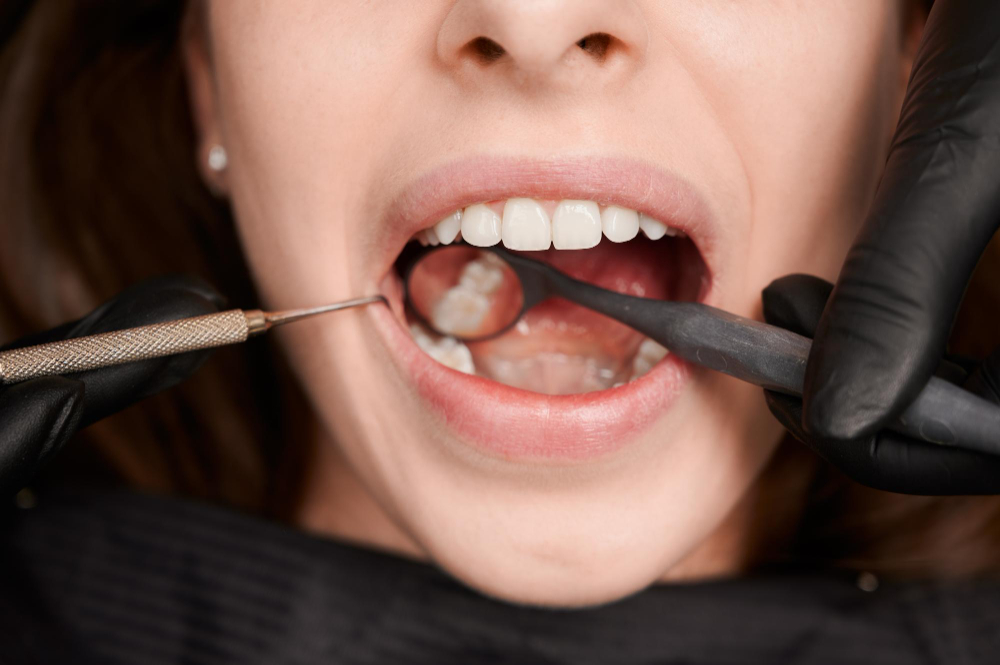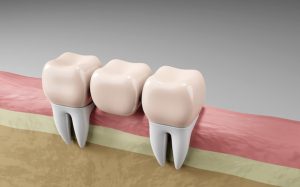TL:DR: Cavities on the Side of your Tooth – A brief
- Hard to detect at early stages without X-rays or a dental exam
- Caused by poor oral hygiene, plaque build-up in teeth gaps, acidic diet
- Can be prevent by daily brushing and flossing, fluoride use and timely dental checkups
- Treatments include fillings, inlay, crowns or root canal treatment
Cavities, also known as tooth decay, are formed when bacteria erode the hard outer surface called the enamel. While most people are aware of cavities that appear on the chewing or biting surface of the teeth, decay can also develop on the sides. These types of cavities, known as interproximal (when found between two teeth) or smooth surface cavities (when found on a flat side of a teeth), are often tricky to detect and treat without a professional dental exam.
In this guide, you will learn what causes a cavity on the side of a tooth, how to treat them, and what you can do to prevent them.
Table of Contents
What are Cavities on the Side of a Tooth?
At Anoka Dental, we have often discovered cavities on the side of the tooth during a routine exam or an X-ray – and this is especially in patients who do not floss regularly. Typically, these develop in the area where two teeth touch. These spots are harder to clean, making them more vulnerable to plaque buildup and decay. Over time, bacteria eat away at the enamel, gradually forming a cavity that can grow deeper if left untreated.
Unlike top-surface cavities that are caused by chewing, cavities on the side of the tooth often don’t cause symptoms right away. In most cases, such cavities are spotted during a dental X-ray or routine dental exams.
What Causes Cavities on the Side of the Tooth?
Understanding the underlying reasons can help you better protect your teeth. The most common causes include:
1. Poor Flossing Habits
We do have patients who brush well but often forget to floss. This leaves side surfaces of the teeth vulnerable to decay. Without regular flossing, plaque and tiny food debris can remain stuck in these spaces. This creates the perfect environment for bacteria to thrive, leading to the formation of cavities on the sides of the teeth.
2. High Sugar and Acidic Diet
Frequent snacking on sugary or acidic foods weakens the enamel, making the side surfaces of your teeth more prone to erosion and decay.
3. Dry Mouth
A lack of saliva limits your mouth’s natural ability to wash away food particles and neutralize harmful acids. This increases the risk of cavities on the side of the tooth. Often, we have noticed this in patients who take certain medications like antihistamines.
4. Worn or Shifting Teeth
As we age or experience dental changes (orthodontic treatment, braces or teeth grinding), our teeth can shift. This creates new gaps where plaque starts accumulating, raising the risk of a cavity on the side of a tooth.
What are the Symptoms of a Cavity on the Side?
While early cavities on the side of a tooth may not show symptoms, here are some signs you can watch out for:
- Sensitivity to hot, cold, or sweet foods
- Pain when flossing or biting
- Visible brown or black spots near the gum line or between teeth
- Halitosis (bad breath) or altered taste in the mouth
- Inflammation, redness, or tenderness in the gums
If you notice any of these signs, schedule a dental exam promptly to prevent further decay.
5 Treatment Options for Cavities on the Side of the Tooth
Treating a cavity on the side of a tooth depends on the extent of spread. Based on how far the cavity has advanced, here is what we recommend:
1. Fluoride Treatment (For Very Early Cavities)
If a cavity is in its very early stage and hasn’t broken through the enamel, fluoride varnishes or gels can help rebuild the enamel and stop the decay from progressing.
2. Tooth-Colored Fillings
For small to moderate cavities or decay, the most common treatment is a composite (tooth-coloured) filling. The dentist will remove the decayed portion of the tooth and restore it with a tooth-colored resin that blends with the natural color of your tooth.
3. Inlays and Onlays
When a cavity is too big for a filling but not big enough for a crown, our dentists usually recommend an inlay or onlay. These are custom-made restorations that are made to fit neatly into the damaged part of the tooth.
4. Dental Crowns
When a cavity or decay is extensive and has compromised the tooth’s structural integrity, a crown may be placed over the entire tooth for protection and strength. This is usually done after a root canal treatment.
5. Root Canal Treatment
If the decay involves the pulp (the nerve inside the tooth), a root canal treatment will be needed to remove infected tissue before restoring the tooth.
Can You Treat a Side Cavity at Home?
In short, no you cannot. While home remedies may offer temporary relief from discomfort, they cannot remove a decay or restore the tooth’s structure. If the cavity is still in its earliest stage and limited to enamel erosion, proper oral hygiene (brushing, flossing, and fluoride use) may help prevent its progression.
That said, side cavities are often difficult to detect and clean effectively without professional help. Although online advice may suggest DIY treatments, we advise our patients to always consult a professional to avoid worsening the decay.
How to Prevent Cavities on the Side of the Tooth
Prevention is the best cure, and there are simple steps you can take to lower your risk of a cavity on the side of a tooth:
1. Floss Daily: Removes plaque and food particles from tight spaces between your teeth, protecting side surfaces.
2. Brush Properly Twice a Day: Use fluoride toothpaste and brush for at least two minutes.
3. Regular Dental Visits: Scheduling routine cleanings every six months to catch early decay and remove plaque.
4. Eat a Tooth-Friendly Diet: Cut down on sugary snacks and acidic drinks. Eat more fruits and vegetables.
5. Use Fluoride Mouthwash: Strengthens the enamel, reducing the risk of cavities.
When to See a Dentist
If you suspect a cavity on the side of your tooth, don’t wait for symptoms to get worse. Remember that early treatment can prevent complications like tooth loss. Schedule a visit with a trusted dentist to get an accurate diagnosis and personalized treatment plan.
Conclusion
A cavity on the side of a tooth may be easy to miss, but if left untreated, can quietly lead to a bigger dental problem. With regular flossing, professional routine cleanings, and routine dental checkups, these hidden threats can be caught early and treated.
Need help managing a side cavity? Anoka Dental offers expert care to diagnose and treat cavities. Book your appointment with our experienced dentist in anoka, MN, today and keep your smile healthy from every angle.
Visit our Anoka Dental office at 12 Bridge Square (1st Ave) #106, Anoka, MN 55303. You can also call us at (763) 421-4002.




